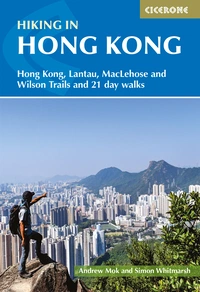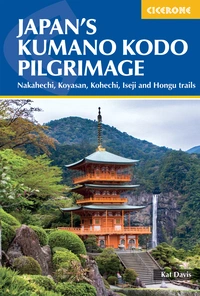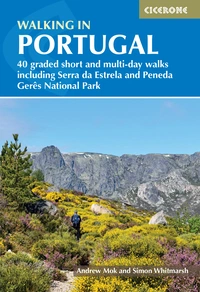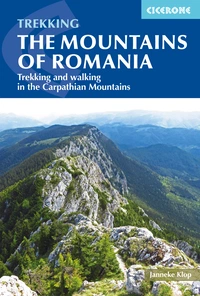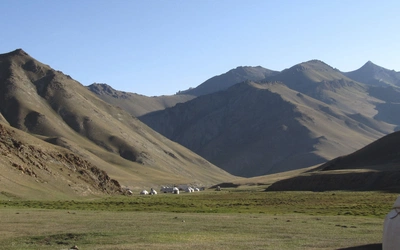Hiking Mount Kinabalu - the highest mountain in Malaysia
Watching sunrise from Mount Kinabalu, the highest mountain in Malaysia, was literally the high point of Andrew and Simon's Borneo adventure. Kinabalu National Park is a Unesco World Heritage site, listed for its biodiversity arising from a huge difference in altitude in a relatively short distance with a wide variety of climates and terrains. Plus, a lot of rain, as they discovered.
We flew into Kota Kinabalu, the capital of the state of Sabah. Although not a particularly pretty or architecturally interesting town itself, it was a convenient base with mouthwatering, exciting local food and opportunities for boat trips to golden sand beaches on nearby islands. We took a minibus for about 90km to Kinabalu National Park, the first Malaysian Unesco World Heritage site. It was listed in 2000 for its biological importance and is at the northern end of the island of Borneo. The mountain the park is named after is one of the youngest non-volcanic mountains and it is still growing at 5mm a year. At 4095m Mount Kinabalu is not only the highest mountain in Malaysia but also the fourth tallest in South-East Asia.
As we were driven through the lower villages the scenery was uninspiring, but much further along we began to ascend, with views of beautiful mountains raising our spirits. Arriving at the park headquarters, at 1500m, the temperature was already massively lower than at sea level.
We stayed in Sutera Sanctuary lodge, which was very clean, well organised and maintained. It was such a pleasure to be staying within the tranquil rainforest. After check-in, we explored the area, doing the Silau-Silau trail, one of the many well-marked routes. It was a delight to hike through dense jungle.
Day 1 - too early for orchids, too late for the Rafflesia

Trying to get our bodyclocks to early mode ready for tomorrow's climb, we set the alarm for 6am. After rapid packing we took a short walk along Kiau View Trail. There was not much of a view because of the mist, but it was a pleasant enough hike, seeing a squirrel-like mountain tree shrew and some chestnut-capped laughing thrushes. Unfortunately, August is not the best month to admire the 1000-plus types of orchid; the optimum is September to December, which we found out later when we strolled around the botanic garden, which also had a handful of the multitude varieties of pitcher plants. Kinabalu is famous for its carnivorous plants including the world’s largest pitcher plant, Nepenthes rajah. Most nepenthes tend to be found higher up in the montane climate zone.
An easy transfer through neatly farmed hills took us down to Poring Hot Springs where we stayed an extra night, partly to explore somewhere new but, if we’re being honest, it was also much cheaper. One thousand metres lower down, it was significantly warmer and we were back to shorts and T-shirts, yet still dripping with sweat. Here, there was a new palette of plants belonging to the tropical lowland dipterocarp rainforest (up to 1200m). Most trees were dipterocarpaceae (which we learnt means that their seeds have wing-like structures), mixed with a huge range of verdant bamboos, gingers, fruit trees and palms, plus more types of ferns than we knew existed. The latter seemed to grow anywhere and everywhere; huge clumps protruding from nooks and crannies of the giant trees, epiphytes sticking limpet-like to what appeared to be sheer smooth trunks, and elegant tree ferns nestling beneath the canopy.
The resort is also a very popular day-trip destination because of the sulphurous geothermally heated water, and the short but fun wobbly canopy walk. If we had arrived one day earlier, we would have seen the flowering of their Rafflesia, the largest bloom in the world.
Day 2 - ‘You start, I'll catch up’
The alarm roused us from a troubled sleep, beset by anxiety about the climb. The free minibus took us back up, looking out at weather that did not look particularly conducive to reaching the summit.
Once back at Kinabalu Park HQ, disorganisation and unnecessary fragmentation was rife; we needed separate forms, to pay and queue for permits, guide fees, packed lunches and the 4km transport to the walk start at Timpohon Gate (1866m). Considering the relaxed attitude to life encountered in Malaysia, the zeal with which they checked passports, climbing permits and other paperwork was surprising. Here, our compulsory guide said: ‘You start, I'll catch up’. We saw him once at lunch, when he ignored us, and then not again until the evening.
At the start, we were in fair if cloudy weather, walking through tropical montane forest surrounded by oaks and coniferous trees, each festooned with its own collection of ferns. The conditions rapidly changed as we ascended, all views becoming obscured as the rainforest was shrouded by dense mist.
We met last night’s unsuccessful summiteers on their way down, having been thwarted by foul weather, as had the last four nights’ climbers, which is unusual considering that August is the dry season!
‘What did you do?’ we asked. ‘We ate a lot! We got up at 2am, had breakfast, got ready to walk, then went back to bed after the “no go” decision. Then got up and ate again at 7am and started going down’.
We walked on, overtaking all the other tourists, yet being overtaken in turn by porters carrying far more than us, powered by gargantuan quadriceps.
By lunchtime it remained mist-wreathed but at least it was still not raining. After that we were in what is named as the ultrabasic rainforest, not a cut-price one but an area defined by very low pH, high magnesium and absent phosphorus, giving rise to some unusual plants: giant pitcher plants and white orchids, whose epiphytic lifestyle suits the area, and more amazing ferns. We even saw some creatures: a monstrous Kinabalu giant red leech, Mimobdella buettikoferi, 12 inches of worm-like leech that exists by devouring earthworms, and many mountain ground squirrels. These look and sound cute, yet are basically rats with fluffy tails, frequently seen picking up crumbs and food around the seats at the rest stations, which are situated every 1km on this section.
It got colder with the higher altitude and began to drizzle slightly as we approached Laban Rata mountain lodge (3270m), our end point for the day. We had covered only 6km in 5 hours thanks to the massive ascent. The torrential rain began in earnest just as we walked through the door, and we felt so lucky to miss the drenching endured by all later arrivals. Life is much harder for plants up here; the verdant tropical rainforest replaced by stunted scrubs and rhododendrons.
The place was basic but clean, although the solar-heated showers were suffering from the dense cloud that had covered the slopes for days: our fingers turned white with cold when we washed our hands.
The one guy who took a shower said it was the worst experience of his life. We declined to verify this.
After a hot drink, the only way to get warm in the unheated dormitory was to stay in our bunkbeds in multiple layers of clothing until the buffet meal at 5pm. After plentiful but not hot enough food, we reunited with our guide who simply said: ‘See you at half past two’, with no further advice or clarification. The highlight of the day was a glimpse of sunset above the cloudscape after dinner before we returned to bed and warmth.
Our fellow dorm companions agreed with us that an early night would be helpful, but there is early and there is ridiculously early: it is not often that we switch off the lights for sleep at 8pm.
Day 3 - effort rewarded
Getting up at 2am when we were still not clear whether the climb was going to happen seemed bizarre, pointless and definitely unfun. The wind howling outside overnight had been ferocious, leading some to already make up their minds to abandon their planned ascent, but at least it had stopped raining. Our guide was there as promised, and as we had a light breakfast and a very welcome warming cup of tea, the safety OK from the rangers came through.
Up we went, in the dark and cold, our head-torches the only illumination as we trudged upwards, ever upwards. Initially, we even had views; the handful of villages on the valley floor delineated by street-lights, and above us a procession of lights crawling up the hill, resembling pretty Christmas decorations. Regrettably, the views did not last, with mist obscuring all, dampening bodies and spirits. As we got higher, we were walking on bare granite and hauling ourselves up the incline along ropes.
There was a compulsory pause to queue at the second of the checkpoints, where once again our paperwork was assiduously checked.
Getting closer to Low’s Peak, the summit named after Hugh Low, a British naturalist who was the first recorded person to reach the peak, we began to see the faster walkers, unable to bear the cold at the top, now descending in the dark, missing the sunrise views. We were glad that we had deliberately tried to ascend at a gradual pace, not wanting to get there too early.
The higher we got, the colder it became. Close to the summit we were wearing every single item of clothing possible: three pairs of trousers, five upper layers and gloves soaked by mist and from handling the wet ropes. However, all the effort was rewarded and justified when we got to Low’s Peak, just as the orange glow of the sun, barely over the horizon, penetrated the cloud.
Then, glory of glory, we got clear views of unparalleled stupendousness; only momentary, as they were re-obscured by the writhing mists, but so stunning, glorious and magisterial.
During those transitory moments, we were able to see that we were atop one of a series of naked granite peaks: Donkey Ears Peak, which was damaged in the 2015 earthquake, the photogenic South Peak and St John’s Peak. We rejoiced, enthused, but the stiff wind gave an additional chill-factor taking the temperature to colder than ice. Up here hardly anything grows except some grass and herbaceous plants in cracks of the bare granite.
As soon as we had taken our pictures of the precious views and a selfie with the summit plaque, we found some shelter. Allowing our legs to recover slightly, we had a snack, the break also giving us more light to start our descent. It took us 3¼ hours to ascend 2km, yet only 2 hours to get back to Laban Rata, a long descent down what we could now see were vast slopes of nude, scoured granite.
We felt sorry for those who had raced to the summit and back again in the dark, as this was the stage with the best clear views, even though they were intermittent.
By the end, muscles were getting tired with some slips and near falls. We had a much-needed break and recharge back at Laban Rata, with a second breakfast at 8:30am, relishing the carbs and sugar. Reinvigorated, we began the second stage of the descent, which felt hugely long, if not never-ending, a massive total of 2340m down in one day. On our way down we could not help but notice with surprise that many of the hikers going up had hired porters to take their day pack. We travelled through so many thermoclines as we descended that we needed to remove layer after layer of clothing, like peeling an onion. It was not surprising that our knees protested by the end.
To get back to Kota Kinabalu, many people had organised private transport, but we took the public bus, and almost as soon as we got on board sleep claimed us.
Practicalities
• The compulsory guide, mountain accommodation (no camping) and permits (limited to 135 per day) need booking far in advance, from Sutera Sanctuary Lodge (the management company of Kinabalu Park) or via tour operators
• The dry season from March to August is the best time to climb
• Bring a good head torch, gloves and multiple layers of clothing, including waterproofs
• You will need to carry passport and proof of pre-booked mountain accommodation (e.g a space at Laban Rata) for both checkpoints

